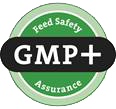- Home
- Seeds
- Fodder grasses and legumes
- FORAGE GRASSES
- Red fescue REVERENT
FOR CONSULTATIONS APPLY TO:
Commercial director
Lina Smalskienė
tel. +370 618 02 551
e-mail linak@agrolitpa.lt
Sales manager
Tautvydas Kliučininkas
tel. +370 681 35 093
e-mail tautvydask@agrolitpa.lt
Sales manager
Eglė Petkevičienė
tel. +370 626 95 458
e-mail eglep@agrolitpa.lt
Sales manager
Kotryna Nakrošytė
tel.: +370 601 39 282
e-mail kotryna@agrolitpa.lt
Products
A multi-purpose, very persistent red fescue for grazing and lawns
- Very robust with even, high yields
- Forms a very dense sward
- Tolerates low cutting
- Winter hardy
- Very healthy
- Good resistance to crown rust and to other common diseases in grasses
- Adaptive to less fertile soil
- High and stable yields
- Rustic plants
- Forms very dense turf, durable, resistant to trampling, lawns with strong turf
- Has narrow, small leaves that form dense, compact tufts
- Leaves may have a slightly reddish-brown tint, especially at the base
- It is a tufted grass that grows to a height of 30-60 cm, depending on environmental conditions
- Inflorescences – green-purple panicles
- Winters well (resistance 8 points)
- Persists for a long time in grasslands
- Very resistant to leaf diseases
- Due to its resistance to leaf diseases, especially to crown rust, the grass retains its high nutritional value and decorativeness throughout the growing season
- Tolerates low grazing and low cutting (7 points)
- Used in pastures, especially in mixtures with other forage grasses, due to good digestibility and nutritional value
- Has a moderate protein content, making it a valuable animal feed
- Provides easily digestible carbohydrates that are a source of energy for animals
- It is a source of essential vitamins and minerals such as calcium, magnesium and B vitamins
- Perennial plant, can grow for many years without reseeding
- Quickly forms a dense and compact turf, which is useful for rapid regeneration of lawns and pastures
- Well suited for pastures/lawns installed in drier, more acidic, less fertile soils
- Can also be used for lawns due to its exceptional decorative properties
- Due to its ability to create dense, compact turf, red fescue is ideal for lawns, parks, sports fields and recreational areas
- Spreads well, so it fills gaps in the lawn and grows well on slopes
- It is widely used for slope stabilization, degraded land reclamation and in anti-erosion protection projects due to its strong root system and stolon’s
- Slow growth rate encourages less frequent mowing
- High resistance to adverse weather and soil conditions
- Highly resistant to a wide range of environmental conditions including low temperatures, drought, soil salinity and moderate shade
- Adapts well to a variety of soil types, including sandy, clay and peat soils. They also tolerate low fertility and moderately acidic soils
- The strong root system of red fescue helps improve soil structure, increases its fertility and prevents erosion
- Recommended for sunny locations, but also tolerates moderate shaded places
- Ploidy – 8
- High regenerative capacity
- Creeping plants
- Exceptional rhizome formation habit
- Excellent turf density
- Colour – medium to dark green
- Moderately fine leaves
- Universal use
- Is an essential component of many lawns’ mixtures
- In landscape lawns – 4 points *
- The colour of grass in recreational lawns – 5 points **
- Fineness of leaves in recreational lawns – 6 points **
- Grass density in recreational lawns – 6 points **
- Suitability for recreational lawns – 6 points **
- Suitability for landscape lawns – 6 points **
When: * 3: not suitable / 6: suitable/good / 9: extremely suitable ** 1: very early, very low / 5: medium / 9: very late, very high/good
*Source: Forschungsgesellschaft Landschaftsentwicklung Landschaftsbau e.V. [research society for landscape development and landscaping], RSM Rasen [German standard seed mixtures for lawns] 2017
** Cultivar classification
- Heading time – 6 points
- Heading (in Germany) – 32 days after April 1
- Growth height/initial development – 7 points
- Growth habits/initial development – 4 points
- Growth height / fully developed – 8 points
- Growth habits / fully developed – 3 points
- Stem length – 8 points
- Primary mass formation – 6 points
- Tendency to dormancy – 4 points
- Resistance – 6 points
- Cutting density – 5 points
- Total dry matter yield – 6 points
- Dry matter yield of the first cut – 7 points
- Dry matter yield of subsequent cuts – 5 points
*According to Beschreibende Sortenliste. Futtergräse Ersparsette, Klee, Luzerne, 2020, Bundessortenamt, data
The varietal parameters may differ from those indicated here when the testing circumstances differ from quondam
Recommended sowing rate: 6-15 kg/ha, when growing in mixtures, and 12-15 kg/100 m2 – for lawn establishment
Keravos sreet. 17, Kerava,
LT-38 131 Panevėžys district, LITHUANIA
Enterprise's code 168598128
VAT code LT685981219
Tel. +370 615 11 315
E. mail info@agrolitpa.lt




.JPG)

